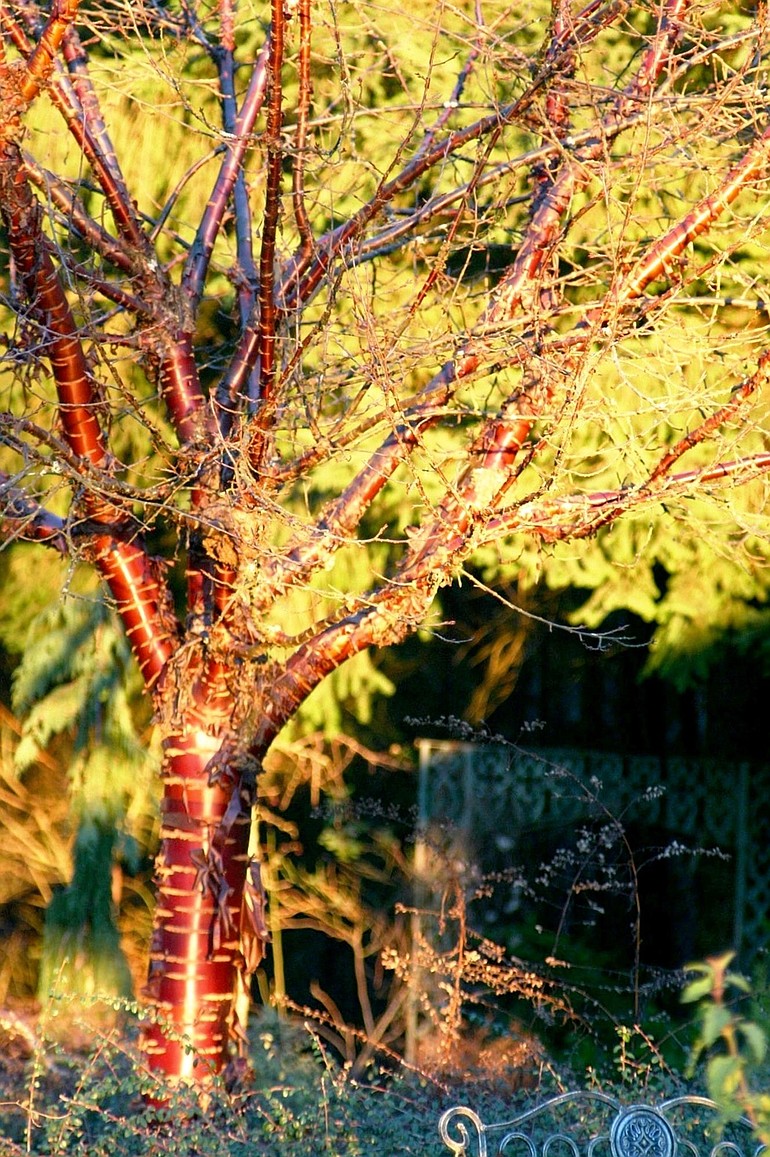Yesterday was glorious; the day after tomorrow might be bleak.
This year, between Oct. 31 and Nov. 1, we had an inch and a half of rain. On Nov. 2, the temperature was 72 degrees. Fall in the Northwest is anything but predictable. Our autumn season is unlike any other in the country. While parts of America are under snow and others are dealing with a 50-degree weather drop, our fall season is typically long, variable and comparably mild.
I have a tendency to take a modest approach to putting my garden to bed for the winter. In the Northwest, it’s possible that roses are still blooming and on clear days, the warm sunlight reflects off the faces of winter pansies. Despite any life still left in the garden, we need to take care of certain jobs before first frost. Our first concern is to bring house plants back inside, protect potted plants that are marginally hardy and tuck tender perennials into their garden beds.
Many of the tender fuchsias, seasonal geraniums (Pelargonium spp.), hebes and jasmine plants will be killed by frost if left in unprotected in the garden. If not killed outright, they will succumb to any series of freezes and thaws that are so typical of our Washington winters. Unless you specifically bought a variety of plant for its hardiness in our area, your plants need to be overwintered in a frost-proof area.
A cold frame, garage or perhaps the no man’s land on the side of your home will do nicely. Use the area between the house and fence that is too narrow and dark for regular gardening. Revamped as a year-round work area, this can become one of the most useful spaces in your garden.
While you’re at it, bring in all delicate ornamental pots and seasonal decorations. Protect them now and you won’t have to replace them when spring returns.
State of dormancy
The point is to keep the plants in a state of dormancy through the winter without freezing the roots or allowing the soil to heave around the roots. Check these plants periodically for water. They should be moist but well drained, so they are not standing in water. This applies to perennials, needle-leaved evergreens, broad-leaved evergreens and trees that were planted out in the garden this fall. A last addition of organic mulch will help hold moisture in the ground for the benefit of new plants.
If you want to try over-wintering marginally hardy plants in their borders, protect the soil around the plant from freezing by covering the crown with a thick layer of straw or mulch. I take advantage of Douglas fir branches that have come down in the fall winds and use them to cover whole areas of flower borders. You can also use Douglas fir or other evergreen boughs, standing on end, to protect taller shrubs such as hydrangeas, roses, escallonias or leucothoe.
Evergreen branches are also a good protection from frigid winds. Tall, slender yew and arborvitae can be wrapped lightly with a thin wire or sturdy twine so that heavy, nonstop rains, winter wind and possibly snow do not split the plant apart. It is possible that even one light snowfall will ruin the ultimate shape of a beautiful, healthy plant. This is one of those chores that few gardeners do and many wish they had done.
Burlap is a fine substitute if you do not have evergreen boughs available. Burlap can easily be supported in a triangular shape around a shrub by using three bamboo stakes and some twine. Also, try making a loose tent over newly planted evergreens. I recommend protecting newly planted conifers if this is their first winter in the ground. A little protection from cold winds is all some plants need to survive their first winter.
Finish your garden cleanup and weeding on days when weather permits. Once again, this is an example of gardening as a personal experience. Some will settle for nothing but a perfectly antiseptic garden going into winter. For others, cutting back straggly branches and spent leaves as well as raking up any yard debris is enough.
I like to leave seed heads on most plants in the flower border to encourage birds to stay and forage through winter. Wildlife enthusiasts will want to include shrubs and trees with winter berries in their garden design. Holly, viburnum and barberry shrubs are great selections for the bird-friendly garden.
Robb Rosser is a WSU-certified Master Gardener. Reach him at Write2Robb@aol.com.



